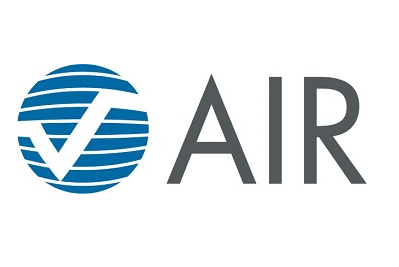AIR Worldwide has announced the release of two updated catastrophe risk models for the Caribbean region, covering tropical cyclone and earthquake risks.
 The company said this will provide re/insurers with models which show a comprehensive view of risk across 29 countries and territories in the region.
The company said this will provide re/insurers with models which show a comprehensive view of risk across 29 countries and territories in the region.
The AIR Tropical Cyclone Model for the Caribbean provides a realistic view of risk and an updated stochastic catalogue will reflect upon current historical date. New features and capabilities which include support for additional lines of business such as large industrial facilities, infrastructure, marine lines can estimate losses, even when not all the characteristics are known.
This also includes a detailed view of the temporal and spatial variation of vulnerability, and high-resolution damage function.
This is all based on an enhanced industry Exposure Database that reflects upon the environment of the region and includes detailed studies of the evolution of building code requirements and construction regulations across particular regions.
Dr. Jayanta Guin, vice president and chief research officer of AIR Worldwide said: “The past several years have reaffirmed the vulnerability of the Caribbean to tropical cyclones and earthquakes. Hurricanes Maria and Irma (2017), Hurricane Dorian (2019), and the 2010 earthquake in Haiti devastated the countries they impacted, and the January 2020 earthquake in Puerto Rico was a more recent reminder of Caribbean seismic risk”
He continued: “Working with local experts, AIR has been able to make innovative advancements in modelling and promote resilience in the region after observing first-hand the devastation left after significant hurricanes and earthquakes.”
There are different building practises in each country in the Caribbean, as well as having unique policy conditions. A comprehensive understanding of exposure in the region is therefore needed to accurately assess any catastrophic risk in the Caribbean.
The updated models span the 29 countries of the Caribbean, account for the latest policy terms and conditions, and share a comprehensive 90-meter resolution industry exposure database that includes high-value exposures, such as luxury hotels and resorts.
The updated AIR Earthquake Model for the Caribbean also accounts for newly added sub-perils to account for tsunami inundation and liquefaction risk.
AIR has installed seismometers, accelerometers, and GPS recording stations in a number of locations since 2010, along with field surveys undertaken to understand the fault geometries at work both on land and offshore.
This additional work has provided new data which can then be leveraged to gain a better understanding of the tectonic complexity of the Caribbean and more accurately model the risk in the updated AIR Earthquake Model for the Caribbean.
“Recent paleoseismological studies, marine surveys, and GPS data have provided new insights into seismicity in the region that inform a significantly updated fault model,” noted Dr. Guin. “These new fault data along with a more comprehensive understanding of the tectonics of the Caribbean region overall allow researchers to better identify faults that may rupture in multi-segment ruptures.”
Recent research has also revealed that ground motion from earthquakes can be amplified or dampened by as much as two or three times, however, this depends on the soil type at the affected location.
The effects of different soil types can be captured through a development of detailed maps which AIR have developed.
The soil maps were created through combining data from multiple sources, including high-resolution geological data, aerial imagery, and digital topographic data.


